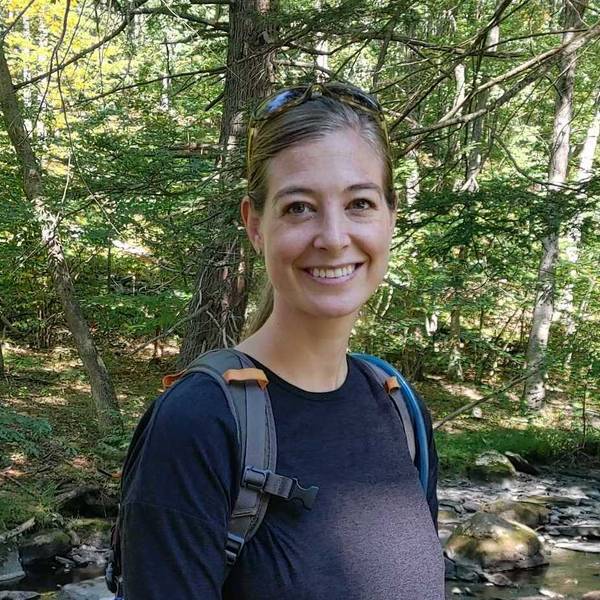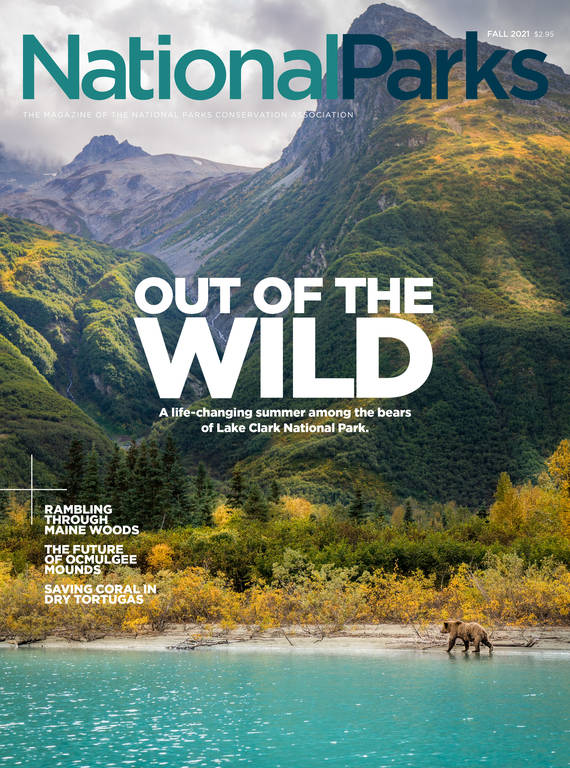Fall 2021
Parks, Interrupted
How COVID-19 has shaped national parks.
Many people view national parks as oases. When daily life grinds them down, they revel in the knowledge that these protected places exist, ready to offer sanctuary. But over the last 18 months, escape has been elusive, and parks have been vulnerable, facing the same evolving guidelines and uncertainty as the rest of the world. They’ve alternately closed and opened, required masks and not, encouraged visitors to come and cautioned them to stay away. In many ways, park administrators’ valiant — if ad hoc — attempts to balance public safety with public access reflect those of society at large.
What were the challenges, innovations and unforeseen outcomes for parks in a pandemic? With higher vaccination rates and a return to normalcy seemingly within reach in some areas, it’s possible to look back at all that’s happened with a measure of objectivity. Here, we share a collection of photos that illustrate at least part of this complicated, sometimes conflicting, story.
Dips & Spikes
Visitation to national parks and their gateway communities typically ebbs and flows with the seasons. Last year, it tumbled off a cliff in early spring when 66 parks shut their gates for two months or more. Eerie images of empty parking lots and trails came out of Yosemite National Park (above), and the media shared stories of shuttered buildings and derailed family vacations.
Most national park sites eventually reopened, but more than a dozen remained closed as the ball dropped on a new year. In the end, 2020’s total park visitation was the second lowest in 40 years, which led to reduced park fee revenue and threatened the economies of nearby communities.
That’s not the full story. Once parks — or parts of them — reopened, people came in droves, desperate for a change of scenery and a reprieve from quarantining.
Though more remote parks, such as those in Alaska, remained notably devoid of vacationers, at least a dozen parks rebounded sufficiently to break individual visitation records in 2020. Arches National Park enforced daily closures when parking lots overflowed, while other parks, such as Rocky Mountain, opted for timed-entry or reservation systems to control the crowds.
Safety First
Parks scrambled to bolster disinfecting regimens and implement measures to protect their staff and visitors. Gloves and a low-tech extension device were used at Grand Teton National Park, while see-through plastic barriers appeared at other park entrance stations to ensure rangers remained physically distanced from arriving motorists.
So Much for Research
“It was a really tough day,” said Abe Miller-Rushing, science coordinator at Acadia National Park, recalling the moment in spring 2020 when he had to advise all the park’s researchers to stop their work for an undetermined amount of time. Across the park system, field research that couldn’t be conducted without compromising staff safety was postponed or outright canceled. Between March and May 2020, the Park Service issued roughly one-third of its typical number of research permits, and some long-running studies were halted for the first time in decades.
The news wasn’t all bleak. The pandemic introduced a welcome variable into the Canada lynx research of Washington State University graduate student Alissa Anderson.
The 170 trail cameras she and her team deployed throughout Glacier National Park captured many people in the western part, but very few in the east, where the entrance was closed to mitigate the risk of infection for residents of the neighboring Blackfeet Indian Reservation. Anderson hopes the data collected between 2019 and 2021 (pre- and post-closure) will provide insights into how lynx and other wildlife respond to human presence.
Leave No Trace?
The combination of crowds and limited enforcement because of reduced staff led to mountains of trash, senseless vandalism, illegal camping and new social trails.
Wild Things
During the spring 2020 park closures, animals had a field day. Coyotes roamed through Yosemite’s Curry Village, and alligators ambled along sidewalks in Everglades National Park even more freely than usual.
Making It Up As We Go

National Parks
You can read this and other stories about history, nature, culture, art, conservation, travel, science and more in National Parks magazine. Your tax-deductible membership donation of $25 or more entitles…
See more ›Last year, the number of volunteers serving in parks dropped by 68% compared to 2019. Revised protocols also delayed summer hiring and limited the number of people who could live in shared housing, resulting in skeleton staffs for many parks. Miller-Rushing said students and those early in their career “got hit particularly hard with losses in internships and volunteer and employment opportunities.”
Interpretive staff, such as those at Indiana Dunes National Park, were often co-opted for traffic control and other duties. Closed visitor centers and aborted in-person programs prompted many rangers to take their passion and expertise outside, where they embraced pop-up-style information desks and virtual classrooms. Bryce Canyon National Park’s geology lesson is an online fan favorite, according to ranger Chelsea Niles. “This experiment usually produces ‘oohs, aahs and whoas,’” she said, noting how the park’s limestone reacts with vinegar in a satisfyingly fizzy manner.
About the author
-
 Katherine DeGroff Associate and Online Editor
Katherine DeGroff Associate and Online EditorKatherine is the associate editor of National Parks magazine. Before joining NPCA, Katherine monitored easements at land trusts in Virginia and New Mexico, encouraged bear-aware behavior at Grand Teton National Park, and served as a naturalist for a small environmental education organization in the heart of the Colorado Rockies.



